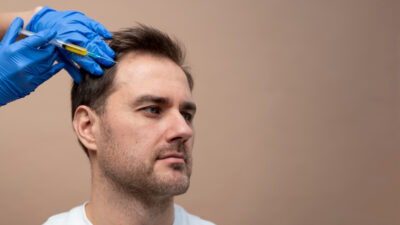In just a few weeks, you could have a new, beautiful nose.
Rhinoplasty can help you reshape your nose, enhancing your appearance and boosting your confidence. And it’s a relatively safe operation, with less than 1% of patients suffering complications.
If you’re considering a nose job, read on to learn about the key rhinoplasty recovery stages.
Week 1
In the first week of your rhinoplasty recovery, expect bruising, numbness, and sensitivity around the nose. Your face may be puffy and swollen, and you may have black “raccoon” eyes.
After around seven days, your doctor will then remove your splint.
Week 2
In the second week of the rhinoplasty recovery timeline, expect less bruising and swelling.
During this time, you should continue following the directions given by your doctor, including limiting strenuous activity or applying pressure to the face.
Week 3
If you’ve been avoiding working out, your doctor may now give you permission to resume your normal routine.
You’ll begin to see the true shape of your nose now that swelling and inflammation have mostly subsided. But still expect to wait a few more months to see your nose at its final result.
Week 4
Between one and two months post operation, you’ll continue to see major changes in your nose.
Most bruising and swelling should be gone, though there may still be some numbness. If there is still significant bruising and puffiness, make sure to visit your doctor to check for any complications.
Week 6-24
After around two months, you can continue all strenuous activities with your doctor’s permission.
For most people, bruising and swelling should be completely gone. But for some with thick skin or who have had previous nose operations, some swelling may still be noticeable.
Note that even though your nose is likely looking great already, it still isn’t completely healed, and the appearance will continue to change over time.
Month 3-6
By now, numbness should be gone, and your skin should feel normal.
Small changes are continuing in the nose cartilage and tissue, though you may no longer notice them. Your results will depend greatly on the type of nose reshaping you chose.
During this period, you’ll likely have your final visit with your doctor to check your healing progress.
Month 6-12
By 12 months following your operation, you can expect your nose to be completely healed. There should be no more discomfort, sensitivity, or any other complications from your rhinoplasty procedure.
And by this time, the appearance of your nose should be at its final stage. It likely won’t continue to change, as long as you avoid injury to the nose.
Read Also-The Complete Guide on How to Choose a Plastic Surgeon
Preparing for the Rhinoplasty Recovery Stages
Rhinoplasty is a relatively safe and easy operation, though recovery can take months. In fact, your nose won’t be in its final form until around one year after the surgery.
Still, within just a few weeks, you can expect big changes and improvements in your nose.
Keep these rhinoplasty recovery stages in mind if you’re considering getting a nose job, and be sure to follow all doctor’s orders to avoid prolonging healing time.
Read our other articles for more beauty and self-care tips!










